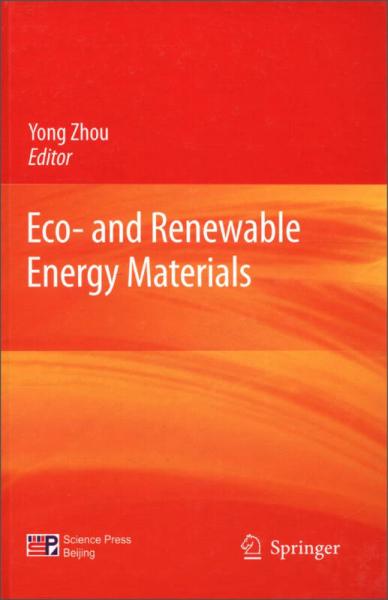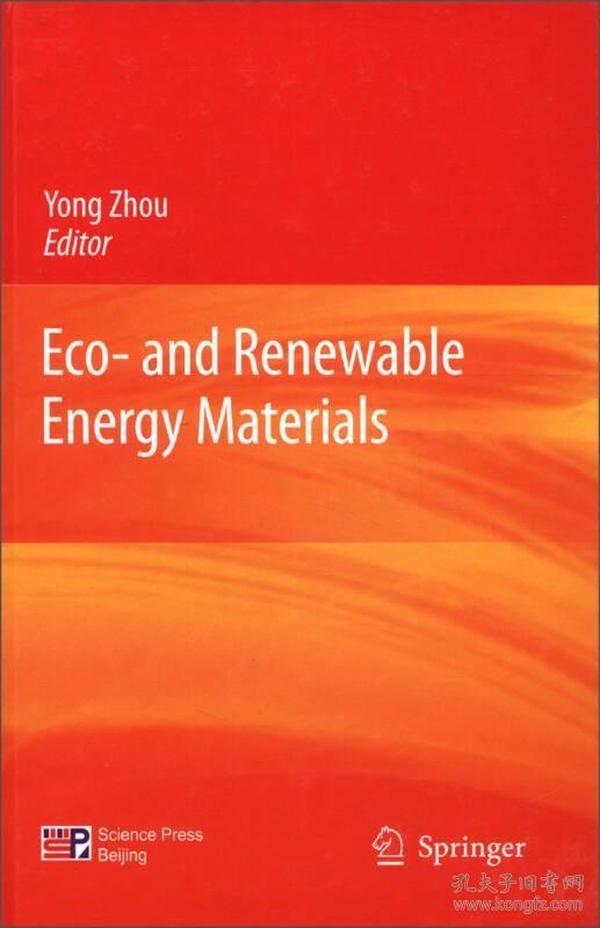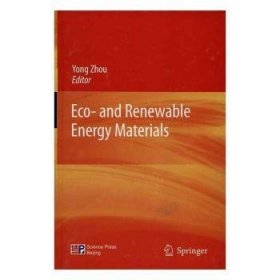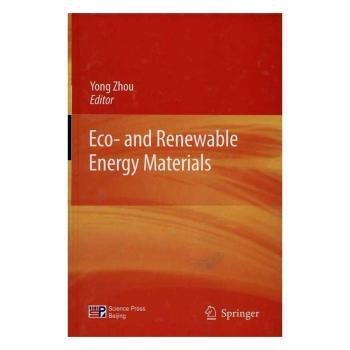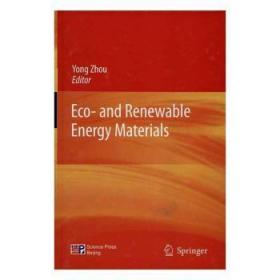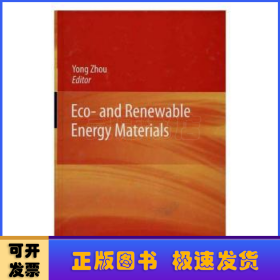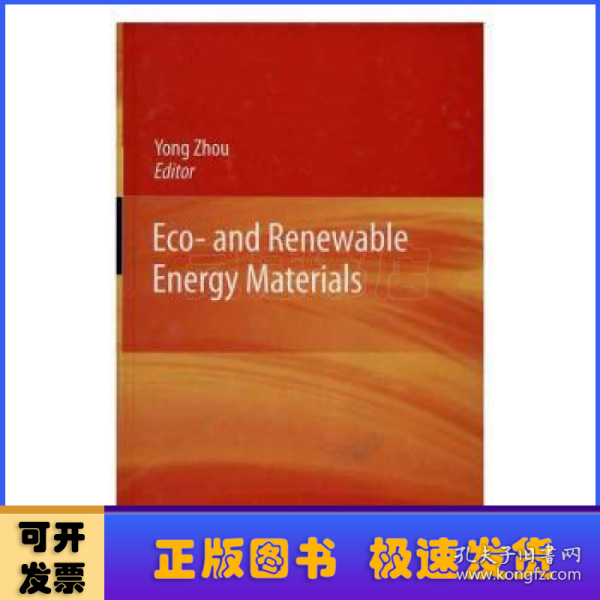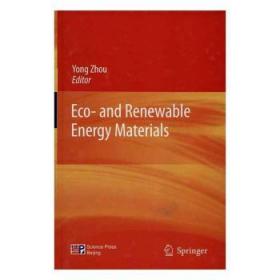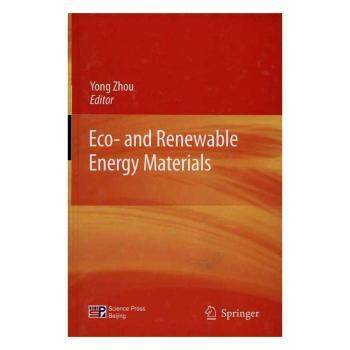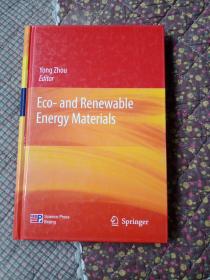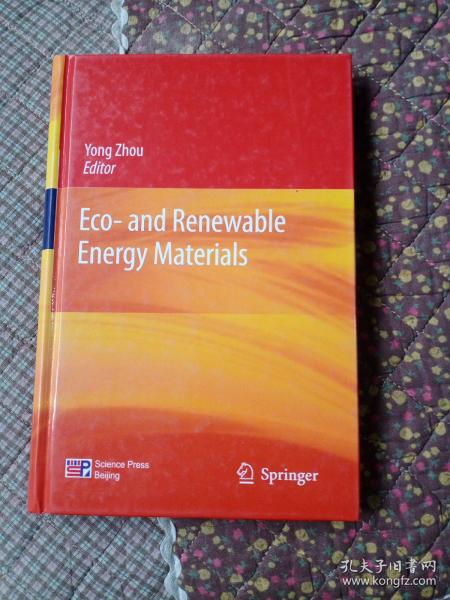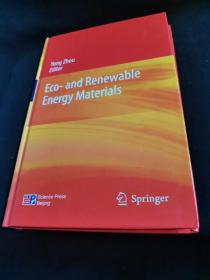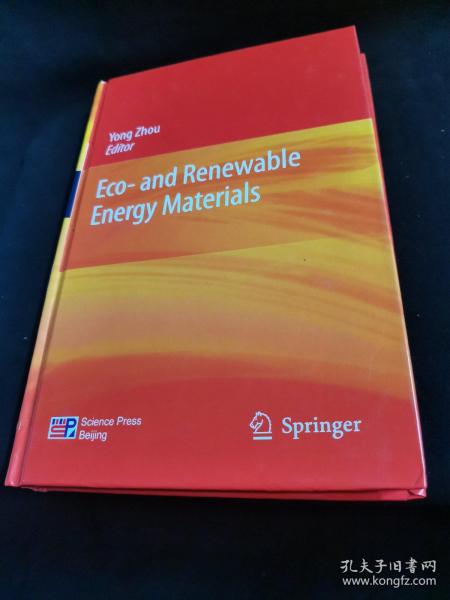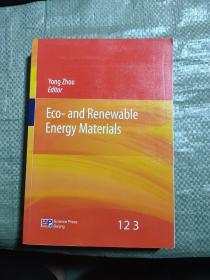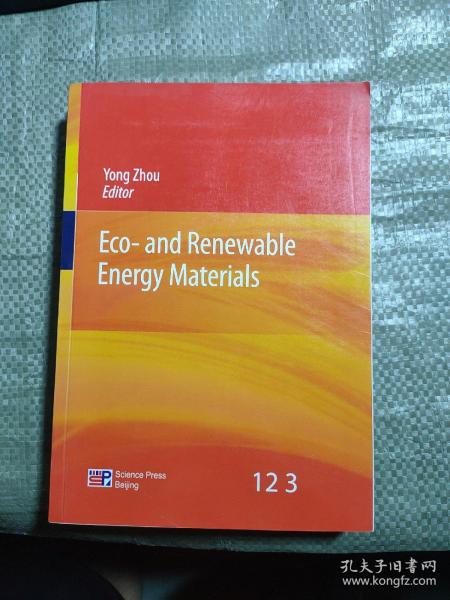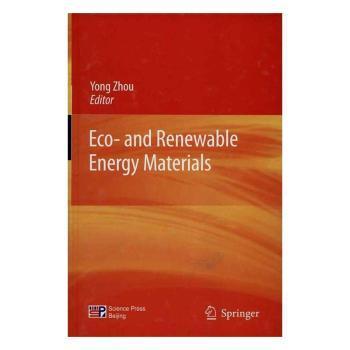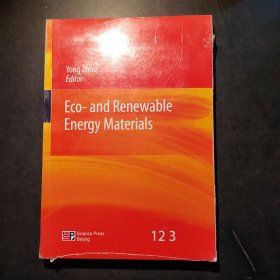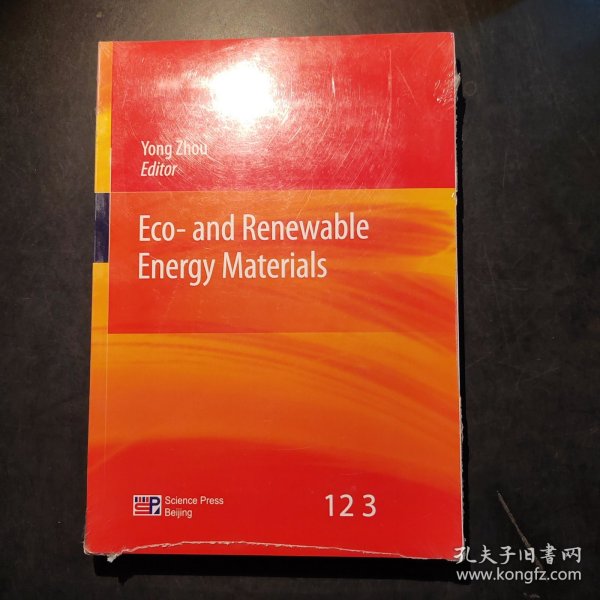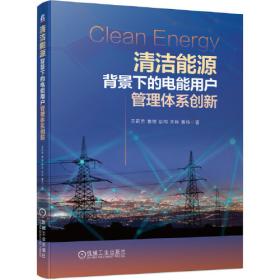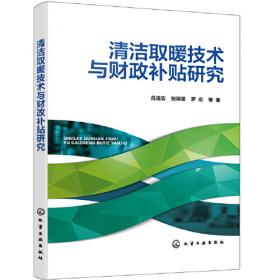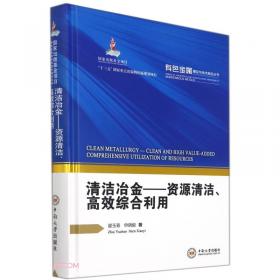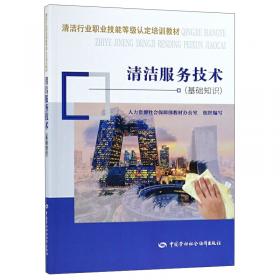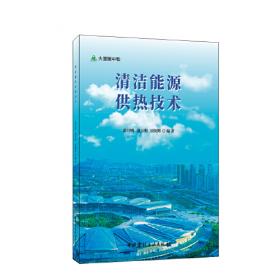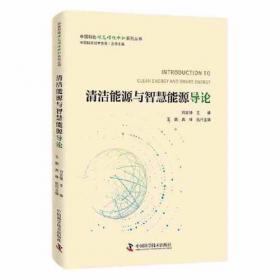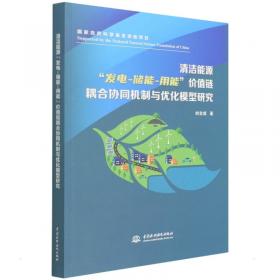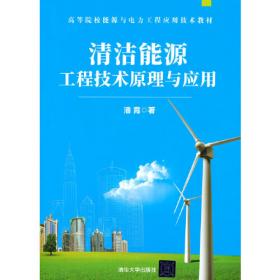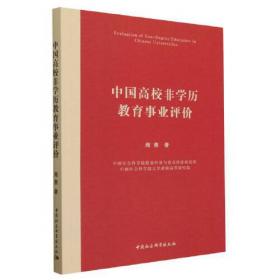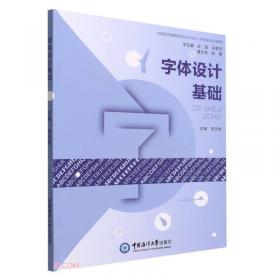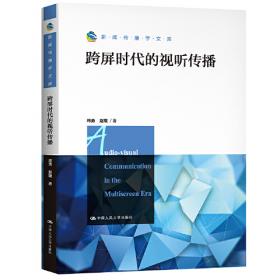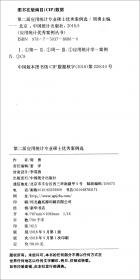清洁可再生能源材料(英文版)
出版时间:
2012-12
版次:
1
ISBN:
9787030352606
定价:
120.00
装帧:
精装
开本:
16开
纸张:
胶版纸
页数:
309页
正文语种:
英语
8人买过
-
Sincethebeginningofthe20thcentury,therehavebeengreatimprovementsinthedailylifeofhumanthroughtheuseofpetroleumasabasicmaterial.However,wenowfacetheproblemofpetroleumsupplyanddepletion.Meanwhile,globalwarming,themostthreateningproblem,stimulatestheresearchtowardsalternativefuelsourcesusingeco-andrenewableenergytypicallysuchassolarenergy.Materialtechnologyplaysaparticularlyimportantroleinthefieldofenergy.Rapiddepletionoffossilfuelsandgrowingenvironmentalconcernsmakeenergyoneofthegreatestchallengesfacinghumankindinthe21stcentury.Weneedsustainableenergyproductionandefficientlyusenaturalenergytomeetsocio-economicandenvironmentaltargets.Tocovervarioustopicsinsuchaninterdisciplinaryarea,itishightimetoprovidetimelyreviewofanumberofimportantdevelopmentsinthisfield.
Thescienceofenergy-harvestingmaterialsisexperiencingphenomenalgrowthandattractinghugeinterest.Eco-andRenewableEnergyMaterialsshowcasesthebasicprincipleandthelatestdevelopmentsofthematerialstechnologies,whicharerelatedtopreventglobalwarmingandsecureenergyresourcesfromtheviewpointofmaterialsscience.Chapter1byChenghuiLiprovidesaconciseoverviewofthedevelopmentofsiliconbasedphotovoltaicmaterials.
Withtheconsiderationoftheuniquenessofperylenes,ChenLiandKlausMulleninChapter2reviewthedevelopmentofperylenesinorganicphotovoltaics.JianguoLiuetalillustratecarboncorrosionintheelectrocatalystsofpolymerelectrolytemembranefuelcellinChapter3.Chapter4byTingyueGuandcoworkerssummarizesvariousrecentadvancesinbio-fuelcellresearchusingvariousbiomassfeedstocks.YonggangWangetalinChapter5surveynewprogressinusingnanostructuredmaterialsascathodesandanodestodeveloplithium-ionbatterieswithhighenergydensity,highratecapability,andexcellentcyclingstability.InChapter6,DechunZouetalsummarizetheupdatedfabricationanddevelopmentoffiexiblesolarcells.Chapter7byZhaoshengLiandcoworkersintroducehistoryandoperatingprinciplesofthephotoelectrochemicalcellforhydrogengeneration.InChapter8,HuantingWangetaldescribetheapplicationofmetal-organicframeworkstoCO2capture.TheyalsoreviewinChapter9recentactivitiesinthedevelopmentofCO2selectiveseparationmembranes,focusingonthefabricationandseparationperformanceofcurrentpolymericmembranesandtheirmodification,inorganicmembranesandmixed-matrixmembranes. Chapter1SiliconBasedPhotovoltaicMaterials
1.1Introduction
1.2Wafer-basedcrystallinesilicon
1.2.1Mono-crystallinesilicon
1.2.2Multi-crystallinesilicon
1.2.3Sheetandribbonsilicon
1.3Thin-filmsilicon
1.3.1Hydrogenatedamorphoussilicon(a-Si:H)
1.3.2Hydrogenatedmicrocrystallinesilicon(c-Si:H)
1.4Nano-structuredsilicon
1.4.1Siliconnanowire
1.4.2Siliconquantumdots
1.5Conclusionandperspective
Reference
Chapter2PerylenesinOrganicPhotovoltaics
2.1Introduction
2.2Perylenepigmentsinsolarcells
2.3Perylenedyesinsolarcells
2.4Perylenecontainedpolymers/oligomersinsolarcells
2.4.1Perylenecontainedheterojunctionsolarcells
2.4.2Perylenecontainedsingle-molecularsolarcells
2.5PerylenesinGratzelsolarcells
2.5.1Thederivativesofperylenediimides
2.5.2Thederivativesofperylenemonoimides
2.5.3Perylenebasedmultichromophores
2.6Conclusionandoutlook
Acknowledgements
References
Chapter3CarbonCorrosioninPolymerElectrolyteMembraneFuelCellCatalystsanditsMitigationStrategies
3.1Introduction
3.2Carboncorrosion
3.2.1Thereasonsandconsequences
3.2.2Mechanismofcarboncorrosion
3.2.3Testmethodsandcharacterization
3.3Mitigationstrategiestocarboncorrosion
3.3.1Systemstrategy
3.3.2Corrosion-resistantcatalystsupport
Acknowledgements
References
Chapter4ConvertingLow-gradeBiomasstoProduceEnergyUsingBio-fuelCells
4.1lntroduction
4.2Theoreticalprinciplesofbio-fuelcells
4.3Designsforscalingup
4.4Materialsinbio-fuelcells
4.4.1Fuels
4.4.2Biocatalysts
4.4.3EnzymesinEFCs
4.4.4MicrobesusedinMFCs
……
Chapter5NanostructuredElectrodeMaterialsforLithium-ionBatteries
Chapter6FiberSolarCells
Chapter7SemiconductorsforPhotoelectrocheMicalHydrogenGeneration
Chapter8TheApplicationofMetal-OrganicFrameworkstoCO2Capture
Chapter9CO2SelectiveSeparationMembranes
-
内容简介:
Sincethebeginningofthe20thcentury,therehavebeengreatimprovementsinthedailylifeofhumanthroughtheuseofpetroleumasabasicmaterial.However,wenowfacetheproblemofpetroleumsupplyanddepletion.Meanwhile,globalwarming,themostthreateningproblem,stimulatestheresearchtowardsalternativefuelsourcesusingeco-andrenewableenergytypicallysuchassolarenergy.Materialtechnologyplaysaparticularlyimportantroleinthefieldofenergy.Rapiddepletionoffossilfuelsandgrowingenvironmentalconcernsmakeenergyoneofthegreatestchallengesfacinghumankindinthe21stcentury.Weneedsustainableenergyproductionandefficientlyusenaturalenergytomeetsocio-economicandenvironmentaltargets.Tocovervarioustopicsinsuchaninterdisciplinaryarea,itishightimetoprovidetimelyreviewofanumberofimportantdevelopmentsinthisfield.
Thescienceofenergy-harvestingmaterialsisexperiencingphenomenalgrowthandattractinghugeinterest.Eco-andRenewableEnergyMaterialsshowcasesthebasicprincipleandthelatestdevelopmentsofthematerialstechnologies,whicharerelatedtopreventglobalwarmingandsecureenergyresourcesfromtheviewpointofmaterialsscience.Chapter1byChenghuiLiprovidesaconciseoverviewofthedevelopmentofsiliconbasedphotovoltaicmaterials.
Withtheconsiderationoftheuniquenessofperylenes,ChenLiandKlausMulleninChapter2reviewthedevelopmentofperylenesinorganicphotovoltaics.JianguoLiuetalillustratecarboncorrosionintheelectrocatalystsofpolymerelectrolytemembranefuelcellinChapter3.Chapter4byTingyueGuandcoworkerssummarizesvariousrecentadvancesinbio-fuelcellresearchusingvariousbiomassfeedstocks.YonggangWangetalinChapter5surveynewprogressinusingnanostructuredmaterialsascathodesandanodestodeveloplithium-ionbatterieswithhighenergydensity,highratecapability,andexcellentcyclingstability.InChapter6,DechunZouetalsummarizetheupdatedfabricationanddevelopmentoffiexiblesolarcells.Chapter7byZhaoshengLiandcoworkersintroducehistoryandoperatingprinciplesofthephotoelectrochemicalcellforhydrogengeneration.InChapter8,HuantingWangetaldescribetheapplicationofmetal-organicframeworkstoCO2capture.TheyalsoreviewinChapter9recentactivitiesinthedevelopmentofCO2selectiveseparationmembranes,focusingonthefabricationandseparationperformanceofcurrentpolymericmembranesandtheirmodification,inorganicmembranesandmixed-matrixmembranes.
-
目录:
Chapter1SiliconBasedPhotovoltaicMaterials
1.1Introduction
1.2Wafer-basedcrystallinesilicon
1.2.1Mono-crystallinesilicon
1.2.2Multi-crystallinesilicon
1.2.3Sheetandribbonsilicon
1.3Thin-filmsilicon
1.3.1Hydrogenatedamorphoussilicon(a-Si:H)
1.3.2Hydrogenatedmicrocrystallinesilicon(c-Si:H)
1.4Nano-structuredsilicon
1.4.1Siliconnanowire
1.4.2Siliconquantumdots
1.5Conclusionandperspective
Reference
Chapter2PerylenesinOrganicPhotovoltaics
2.1Introduction
2.2Perylenepigmentsinsolarcells
2.3Perylenedyesinsolarcells
2.4Perylenecontainedpolymers/oligomersinsolarcells
2.4.1Perylenecontainedheterojunctionsolarcells
2.4.2Perylenecontainedsingle-molecularsolarcells
2.5PerylenesinGratzelsolarcells
2.5.1Thederivativesofperylenediimides
2.5.2Thederivativesofperylenemonoimides
2.5.3Perylenebasedmultichromophores
2.6Conclusionandoutlook
Acknowledgements
References
Chapter3CarbonCorrosioninPolymerElectrolyteMembraneFuelCellCatalystsanditsMitigationStrategies
3.1Introduction
3.2Carboncorrosion
3.2.1Thereasonsandconsequences
3.2.2Mechanismofcarboncorrosion
3.2.3Testmethodsandcharacterization
3.3Mitigationstrategiestocarboncorrosion
3.3.1Systemstrategy
3.3.2Corrosion-resistantcatalystsupport
Acknowledgements
References
Chapter4ConvertingLow-gradeBiomasstoProduceEnergyUsingBio-fuelCells
4.1lntroduction
4.2Theoreticalprinciplesofbio-fuelcells
4.3Designsforscalingup
4.4Materialsinbio-fuelcells
4.4.1Fuels
4.4.2Biocatalysts
4.4.3EnzymesinEFCs
4.4.4MicrobesusedinMFCs
……
Chapter5NanostructuredElectrodeMaterialsforLithium-ionBatteries
Chapter6FiberSolarCells
Chapter7SemiconductorsforPhotoelectrocheMicalHydrogenGeneration
Chapter8TheApplicationofMetal-OrganicFrameworkstoCO2Capture
Chapter9CO2SelectiveSeparationMembranes
查看详情
-
九品
北京市东城区
平均发货25小时
成功完成率88.79%
-
九品
北京市昌平区
平均发货22小时
成功完成率89.21%
-
全新
北京市丰台区
平均发货7小时
成功完成率92.85%
-
全新
北京市海淀区
平均发货9小时
成功完成率94.41%
-
全新
上海市黄浦区
平均发货10小时
成功完成率95.23%
-
全新
山东省泰安市
平均发货7小时
成功完成率93.59%
-
全新
北京市通州区
平均发货12小时
成功完成率96.25%
-
全新
北京市朝阳区
平均发货13小时
成功完成率84.36%
-
全新
北京市通州区
平均发货13小时
成功完成率96.2%
-
全新
山东省泰安市
平均发货7小时
成功完成率84.1%
-
全新
北京市通州区
平均发货10小时
成功完成率91.64%
-
2012-12 印刷
九五品
北京市东城区
平均发货7小时
成功完成率94.04%
-
九品
北京市昌平区
平均发货9小时
成功完成率97.11%
-
全新
北京市通州区
平均发货42小时
成功完成率85.33%
-
全新
北京市通州区
平均发货35小时
成功完成率80.7%
-
全新
北京市通州区
平均发货43小时
成功完成率85.92%
-
全新
河北省保定市
平均发货6小时
成功完成率97.32%
-
全新
-
全新
北京市通州区
平均发货27小时
成功完成率88.69%
-
全新
河北省保定市
平均发货10小时
成功完成率88.89%
-
全新
-
全新
北京市通州区
平均发货27小时
成功完成率83.05%
-
清洁可再生能源材料(英文版)
Eco-and Renewable Energy Materials 3I30b ax预售 介意者慎拍 拍下即表示认可 祝您购物愉快!版次更新不同步 以实际收到书为准
全新
北京市朝阳区
平均发货24小时
成功完成率68.42%
-
清洁可再生能源材料(英文版)
Eco-and Renewable Energy Materials 3I30z ax预售 介意者慎拍 拍下即表示认可 祝您购物愉快!版次更新不同步 以实际收到书为准
全新
北京市朝阳区
平均发货22小时
成功完成率87.88%
-
清洁可再生能源材料(英文版)
Eco-and Renewable Energy Materials 3I30j ax预售 介意者慎拍 拍下即表示认可 祝您购物愉快!版次更新不同步 以实际收到书为准
全新
北京市房山区
平均发货27小时
成功完成率78.57%
-
全新
北京市房山区
平均发货1小时
成功完成率93.38%
-
全新
-
全新
北京市海淀区
平均发货11小时
成功完成率76.47%
-
全新
河北省保定市
平均发货13小时
成功完成率66.67%
-
全新
河北省保定市
平均发货31小时
成功完成率87.08%
-
九品
北京市海淀区
平均发货24小时
成功完成率88.65%
-
九五品

 占位居中
占位居中

